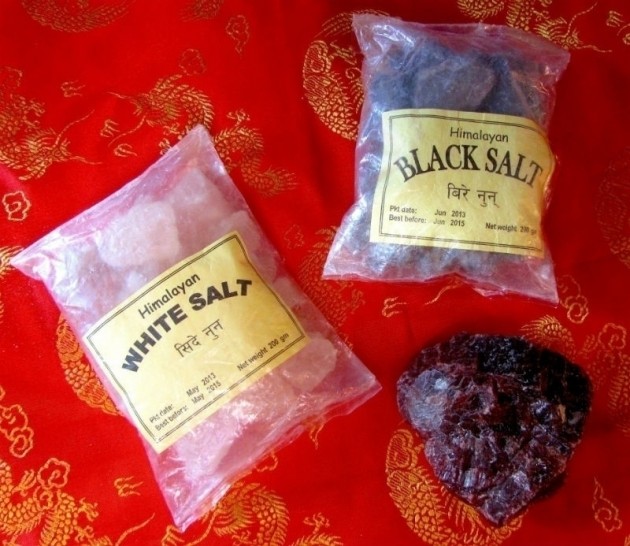What We SHOULD Eat
1. Nutrient-Dense Leafy Greens - daily, unlimited amounts! The more the better! One or two types at any time. Explore the many kinds. Try kale, mustard greens, collards, dandelion greens, arugula, beet greens, parsley, cilantro, spinach, swiss chard, endive, green and red lettuce, turnip greens, lamb’s lettuce, watercress, fresh herbs, etc…...
Autoimmune Conditions
Examples of autoimmune conditions include the following: Rheumatoid arthritis (RA) Type 1 diabetes Crohn's Disease Hashimoto's thyroiditis Neurological diseases Multiple Sclerosis (MS) Glomerulanephritis Pernicious Anaemia Goodpasture's syndrome Scleroderma Raynaud's Phenomenon Lupus (e.g., systemic lupus erythematosus [SLE]) Inflammatory bowel disease (IBD)...
Candida Albicans
Candidiasis is an infection with a fungus of the Candida strain, usually limited to the skin and mucous membranes, but sometimes is systemic and life-threatening. Candida albicans are a single cell yeast/fungus that is found in practically 100% of the population. It lives on the mucous membranes of the body, the digestive/intestinal tract, vagina and the skin. MOST...
Ear Dysfunction - Infection (Otitis Media)
Acute otitis media is a viral or bacterial infection of the middle ear, usually secondary to a URI. It is most common in children six to 36 months old and then again at 4-7 years old. It is the most frequent diagnosis of children in a clinical setting, and it is estimated that about 2 billion dollars spent each year for conventional medical and surgical treatment of the condition.
Female Conditions
Amenorrhea Absence of menstruation. Amenorrhea may be primary (the girl has never begun her periods) or secondary (the woman had her periods once and then stopped having them). Physiologic amenorrhea is the lack of menses before menarche, during pregnancy and early lactation, and after menopause (all considered normal). All other causes of amenorrhea are pathologic. Causes of Primary...
Inflammatory Bowel Disease (IBD)
Crohn's Disease, Ulcerative Colitis, Irritable Bowel Syndrome, and Celiac Disease
Liver / Gallbladder
Hepatopathy: any disease of the liver. Hepatotoxin: a toxin that destroys liver cells. Cholestasis: stoppage or suppression of bile flow, due to factors within (intrahepatic cholestasis) or outside the liver (extrahepatic cholestasis). Cirrhosis: a liver disease characterized pathologically by the loss of the normal microscopic lobular architecture and regenerative...
Lupus (Erythematosus)
This is a chronic, inflammatory, autoimmune (the body is attacking itself) disease that affects connective tissue (tissue that binds and supports various structures of the body and also includes the blood). Discoid lupus erythematosus (DLE) is a less serious type, affecting exposed areas of the skin and sometimes the joints. Systemic lupus erythematosus (SLE) is more serious,...
Rheumatoid Arthritis
The Natural Approach Rheumatoid arthritis is a chronic inflammatory condition that affects the entire body but especially the synovial membranes of the joints. It is a classic example of an "autoimmune disease," a condition in which the body's immune system attacks the body's own tissue. Although rheumatoid arthritis is a systemic disease, it affects primarily the joints. The...
Sinusitis / Hayfever / Allergic Rhinitis
An inflammation or infection in the paranasal sinuses. The most common inciting agent of sinusitis is a viral upper respiratory infection, although bacteria, fungi, and allergic reactions may also be responsible. Any factor that creates edema of the nasal tissues resulting in obstruction and the lack of proper drainage of the area will often lead to sinus infection. As the obstruction continues,...
Skin Conditions
Acne Vulgaris An inflammatory disease most commonly seen in teenagers. It affects areas where sebaceous glands are largest, most numerous, and most active. Mild cases consisting of few residual signs except possibly dilated pores, and the development of the comedo, or blackhead, may progress through more pathological stages of ruptured sebaceous ducts, pustule formation,...
Small Intestine / Pancreas
Symptoms Abdominal cramps; indigestion 1-3 hours after eating; fatigue after eating; lower bowel gas; alternating constipation and diarrhea; diarrhea; roughage and fiber caused constipation; mucous in stools; stool poorly formed; shiny stool; three or more large bowel movements daily; foul smelling stool; dry flaky skin and/or dry brittle hair; pain in left side under rib cage; acne; food...
Ulcers (duodenal and gastric), H. Pylori
Your digestive system produces strong acids and juices that are designed to help break down the food you eat so that its components can be used to nourish the body. The lining of the healthy stomach is marvelously resistant to these juices and is not affected by their caustic nature. In ulcer patients, this defense of the stomach's lining against stomach acids has broken down somehow, so that...
Urinary Tract Infection (UTI) / Bladder Infection (Cystitis)
Symptoms Urinary urgency. Urinary frequency. Painful urination. These are relatively common symptoms of a urinary tract infection (UTI), although only about half of those who acquire a UTI are symptomatic. People most prone to UTIs are women of childbearing age.






